The museum will be closed Thursday, December 25 for the Christmas holiday. We will reopen Friday, December 26.
Depth Perceptions
NHM’s marine collections illuminate the shape of life in deep water.
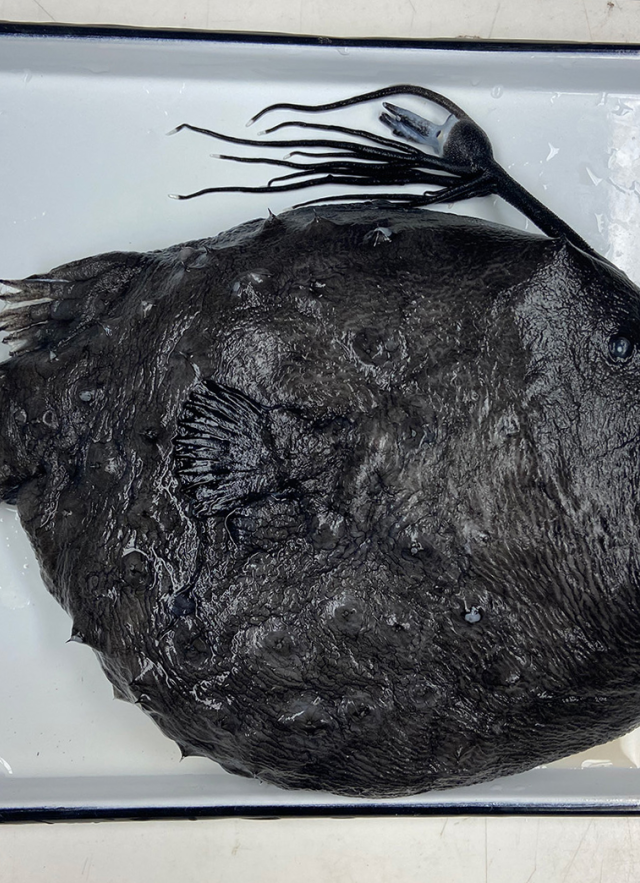
Published March 3, 2023
The deepest parts of our planet are a world unto themselves, and technological marvels like filmmaker and explorer James Cameron’s DEEPSEA CHALLENGER submersible make visiting that world possible. Pressure: James Cameron Into the Abyss has moved on to new adventures and is no longer at NHM. We invite you to explore some of the vast and diverse marine biology collections made possible by deep-sea voyages.
Whales are the giants of animal divers, and Cuvier’s beaked whale is the champion, regularly reaching depths of nearly 3,000 meters to hunt, using incredible adaptations. “With few exceptions, dolphins, whales, and pinnipeds, have bones that are osteoporotic, which is an adaptation related to deep diving," says Dr. Jorge Velez-Juarbe, vertebrate paleontologist and Associate Curator of Marine Mammals at the Natural History Museum of Los Angeles County. "After a certain depth (between 40-150 meters), the lungs collapse in these deeper diving marine mammals as an adaptation to avoid 'the bends', so having a lighter skeleton is advantageous as they still need to find their way back to the surface.” Collection specimens provide vital information for understanding these incredible divers–and how they evolved to reach the deep. "By carefully studying the bones of marine mammals you can have an idea of their diving behaviors."
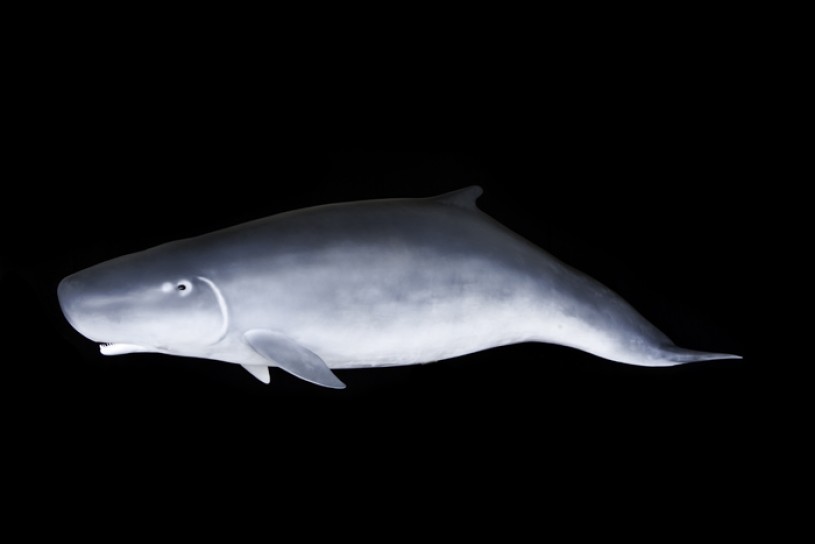
Part-time marine mammals like NHM’s Curator of Crustacea Dr. Jody Martin (and the rest of humanity) overcome their diving deficits with incredible engineering.
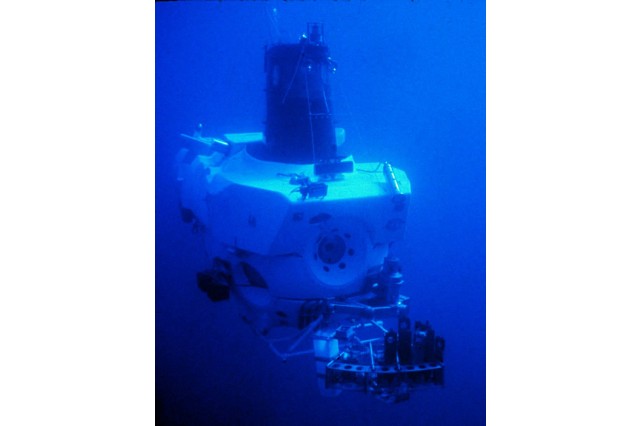
Initially commissioned in 1964, the Alvin was designed to move more fluidly through deep water. It's still in operation today, surviving entanglement with a swordfish and a sinking to complete more than 5,000 dives. Institutions including NHM house specimens collected from Alvin dives.

Innovations like syntactic foam–a buoyant material that is still capable of withstanding the incredible pressures of the deep sea–made the Alvin and future submersibles possible.
1 of 1
Initially commissioned in 1964, the Alvin was designed to move more fluidly through deep water. It's still in operation today, surviving entanglement with a swordfish and a sinking to complete more than 5,000 dives. Institutions including NHM house specimens collected from Alvin dives.
Innovations like syntactic foam–a buoyant material that is still capable of withstanding the incredible pressures of the deep sea–made the Alvin and future submersibles possible.
At that depth, you’re deep into the 1,000–4,000-meter Midnight Zone, a world completely shrouded in darkness. Unlike the rest of Earth where life revolves around the sun–fueled by photosynthesis—this part of our planet is entirely untouched by light—so it’s fitting that the journey feels interstellar.
"As you're sinking, you see points of light, like stars in the night sky." Dr. Martin said. "You see things blinking on and off–it's really a light show going down."
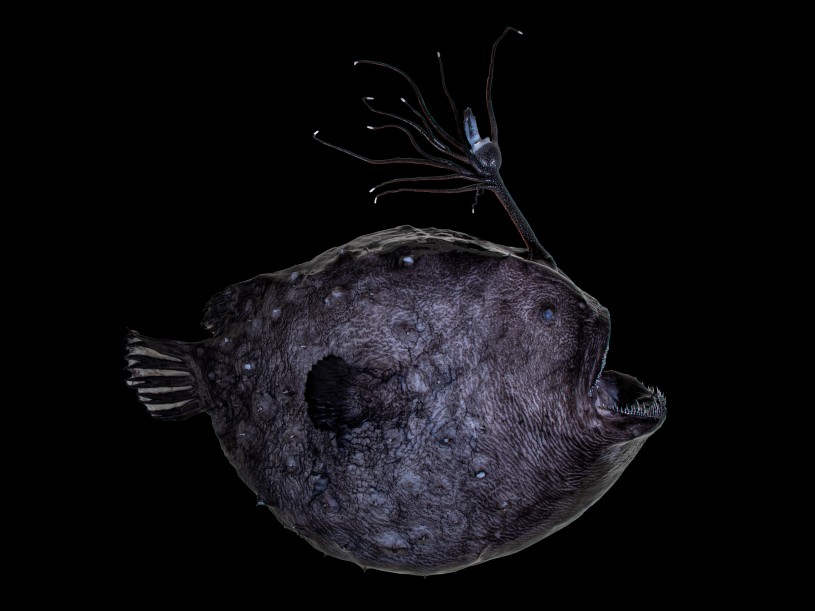
In 2004, Dr. Martin set sail on the RV Atlantis, floating science lab and mothership of the famed Alvin, for a 3250-meter dive into Gorda Ridge. Dr. Martin and his fellow researchers were looking into one of the biggest mysteries about life in deep water: how did it get down there in the first place?
Nature's Own Submarines
Far removed from the sustaining light of our sun, life is only possible thanks to fissures in Earth's crust caused by earthquakes. Some of these fissures let frigid seawater mix with magma, jetting life-giving minerals and water into the depths. These hydrothermal vents can spew materials more than 700 degrees F, making life at these levels a dangerous balancing act.
These 'smokers' are one of the ways life is possible without the sun, creating ecosystems unlike anything else on Earth. "These communities live off the bacteria that are living off the minerals in these vents," says Martin. "So you get this whole chain of life—the only ecosystem like it on the planet."
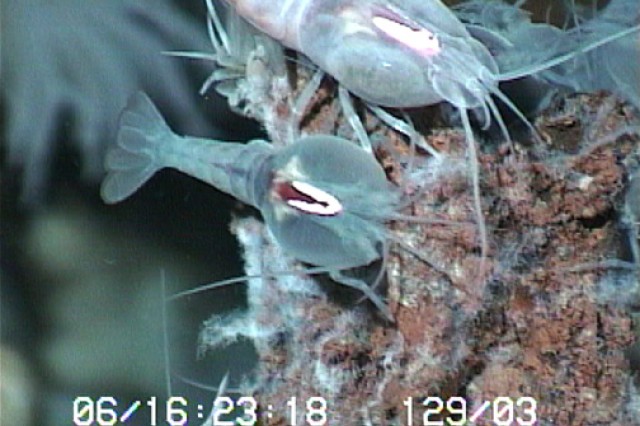
Researchers believe these eyeless shrimp (Rimicaris exoculata) have given up sight for survival on the ocean floor by detecting the radiation given off by hydrothermal vents via visual pigments. "Because it turns out there's a very narrow range where you can live," says Dr. Martin. "You get too far away and it's too cold. If you get too close, you get cooked."
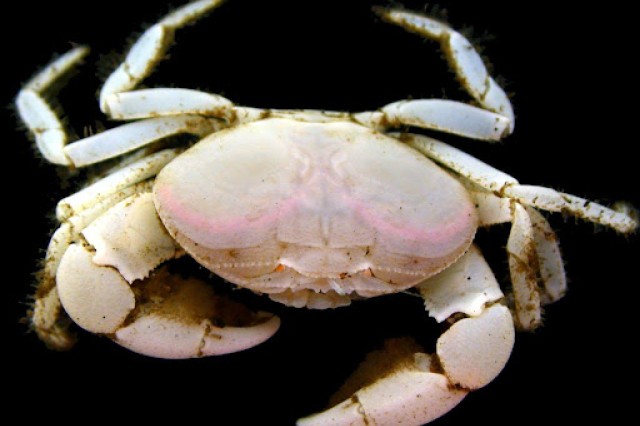
One of the blind crabs found near hydrothermal vents, Bythograea thermydron and similar species survive in extreme–and fleeting–environments. The vents typically last from only 10 to one hundred years.
1 of 1
Researchers believe these eyeless shrimp (Rimicaris exoculata) have given up sight for survival on the ocean floor by detecting the radiation given off by hydrothermal vents via visual pigments. "Because it turns out there's a very narrow range where you can live," says Dr. Martin. "You get too far away and it's too cold. If you get too close, you get cooked."
One of the blind crabs found near hydrothermal vents, Bythograea thermydron and similar species survive in extreme–and fleeting–environments. The vents typically last from only 10 to one hundred years.
The vents explain how animals survive without the sun's light or heat, but exactly how animals make it to the vents remains a mystery.
The expedition's lead scientist Dr. Janet Voight thought that maybe the deep sea denizens making their home at the vents were hitching a ride on felled trees washed out to sea, carrying organisms from shallow water into the deep. The logs produce methane as they decay in the shallower water before eventually finding their way to the deep–along with the methane and creatures depending on it. To test this, Dr. Voight had dropped pieces of wood–the team would be searching the ocean floor, hoping to shine a light on whether or not this wood might be rafts for deep-sea life.
"And our job was to find the wood again and haul it back on board and see if any creatures had colonized it. And indeed, they had. There were crabs and little crustaceans and worms and things burrowing in and living all over the wood," Dr. Martin recounts. "Maybe this is a stepping stone of how these communities got to the deep sea."
Collected on a different Alvin dive, these hydrothermal vent limpets (Lepetodrilus elevatus) are one of many deep-sea mollusks first described by former Malacology Curator Jim Mclean. Mclean became an expert on deep-sea gastropods over his career, describing 385 previously unknown marine mollusks before passing in 2016.
Small but mighty important, these limpets are paratypes, specimens used in the original description of a previously unknown species alongside the holotype–the lucky limpet (in this case) that's the basis for the new species. Malacology Collections Manager hands (Lindsey Groves) included for scale.
Giant vent clams like these Calyptogena (Ectenagena) magnifca from NHM's Malacology Collection colonize hydrothermal vents. Discovered and brought back from an earlier Alvin dive, exactly why they live by some hydrothermal vents–at depths of 2,645 meters–and not others is still a mystery.
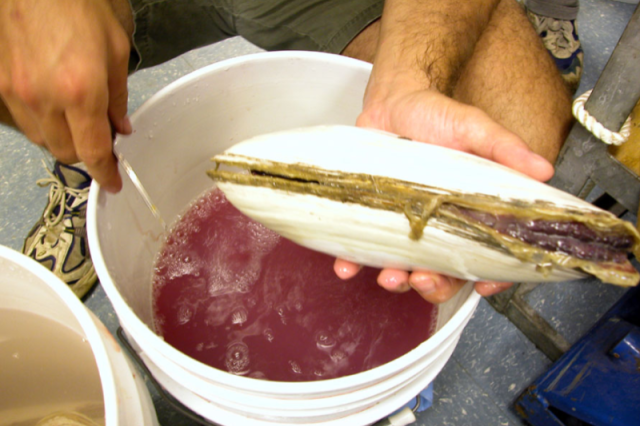
A vent clam up from the deep. Specimens like this provide historical information about the place and time they were collected, and new uses for collections continue to grow as science advances. Some specimens can supply molecular or genetic information, helping researchers better understand how these creatures evolved to live in the abyss.
1 of 1
Collected on a different Alvin dive, these hydrothermal vent limpets (Lepetodrilus elevatus) are one of many deep-sea mollusks first described by former Malacology Curator Jim Mclean. Mclean became an expert on deep-sea gastropods over his career, describing 385 previously unknown marine mollusks before passing in 2016.
Small but mighty important, these limpets are paratypes, specimens used in the original description of a previously unknown species alongside the holotype–the lucky limpet (in this case) that's the basis for the new species. Malacology Collections Manager hands (Lindsey Groves) included for scale.
Giant vent clams like these Calyptogena (Ectenagena) magnifca from NHM's Malacology Collection colonize hydrothermal vents. Discovered and brought back from an earlier Alvin dive, exactly why they live by some hydrothermal vents–at depths of 2,645 meters–and not others is still a mystery.
A vent clam up from the deep. Specimens like this provide historical information about the place and time they were collected, and new uses for collections continue to grow as science advances. Some specimens can supply molecular or genetic information, helping researchers better understand how these creatures evolved to live in the abyss.
Deeper Than the Abyss
None of us holds a candle to whale diving ability, but we're still the only mammals to make it into the deeper zones. The Alvin has undergone a number of upgrades since it first launched in the 1960s, increasing its depth ratings to up to 6,000 meters–well into the Abyssal Zone.
The water temperature is almost freezing and the pressure is more than 1,000 times greater than at sea level, making life exceedingly difficult–but not impossible. Fish like grenadiers from the Macrouridae family and snailfishes in the Liparidae family have been recorded as deep as 7,000 meters.
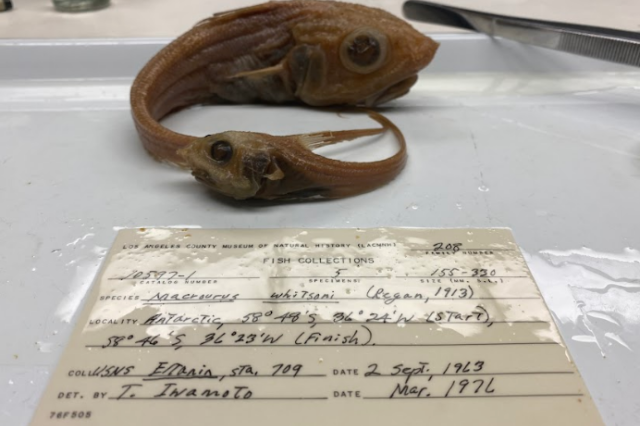
Macraurus whitsomi from NHM's Ichthyology Collection. Its large distinct nose likely holds chemoreceptors to help it survive without seeing. It's from the Macrouridae family of fishes which includes some of the deepest living fish on the planet.
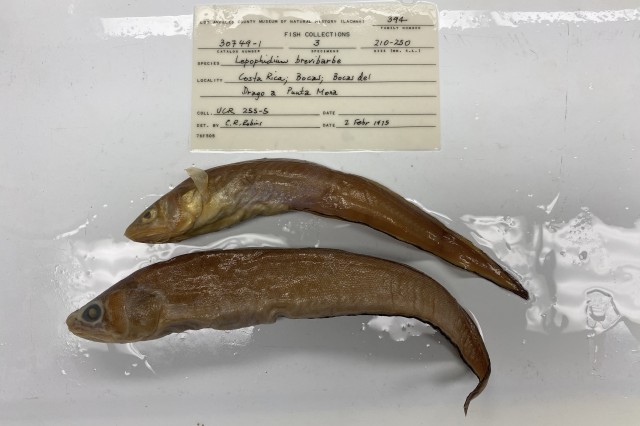
Lepophidium brevibarbe or shortbeard cusk-eel from NHM's Ichthyology Collection.
1 of 1
Macraurus whitsomi from NHM's Ichthyology Collection. Its large distinct nose likely holds chemoreceptors to help it survive without seeing. It's from the Macrouridae family of fishes which includes some of the deepest living fish on the planet.
Lepophidium brevibarbe or shortbeard cusk-eel from NHM's Ichthyology Collection.
Cusk eels from the Ophidiidae family have been recorded at depths of 8,000 meters–the deepest of any fish. These fish families are all very distantly related, but life in the Abyss has shaped their bodies in similar ways, an eely example of convergent evolution. "Their ancestors had very different body plans," says NHM Ichthyology Collections Manager Dr. Todd Clardy. "but the deep sea lifestyle brought them back together."
These fishes both get by at mind-numbing depths through anguilliform (eel-like) movement–they slowly swish their whip-like tales to conserve energy. "They can do it all day long," says Clardy.

It's hard to conceptualize just how deep the ocean gets. Its deepest known point–the true bottom of the ocean–is the Challenger Deep in the Mariana Trench, a staggering 10,908 meters. Consider taking the tallest mountain on earth, turning it upside down, and going more than 1,000 meters–the Hadal Zone is deeper than Mt. Everest is tall.
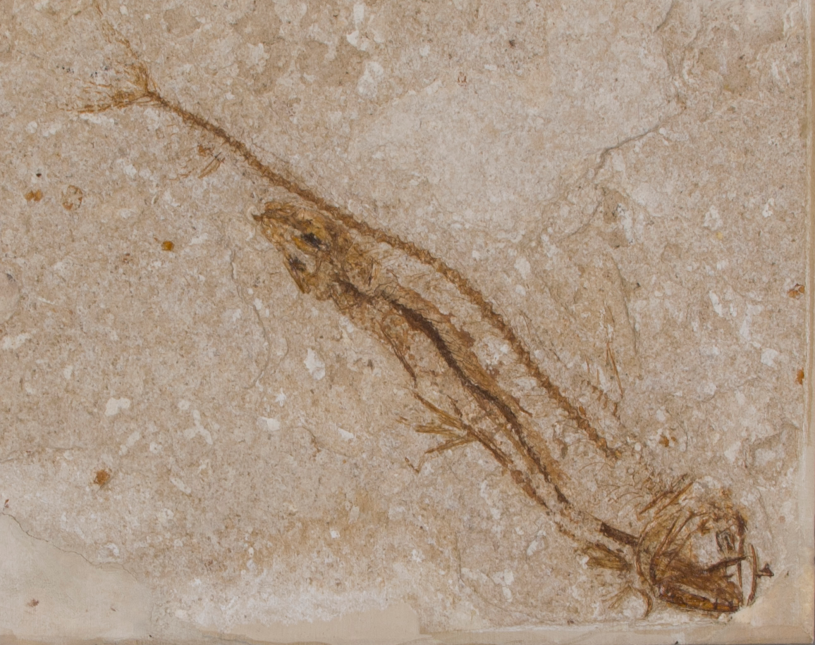
We know more about the surface of the moon than life at those depths, making submersibles like DEEPSEA CHALLENGER essential to better understanding life on our planet. Museum collections like NHM's mean that researchers will have access to deep-sea specimens whether or not they can fund a trip to any of the zones. Every specimen helps map that largely unexplored world, shedding some light on the deep sea all the way from the surface.
